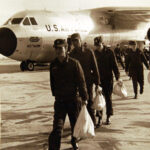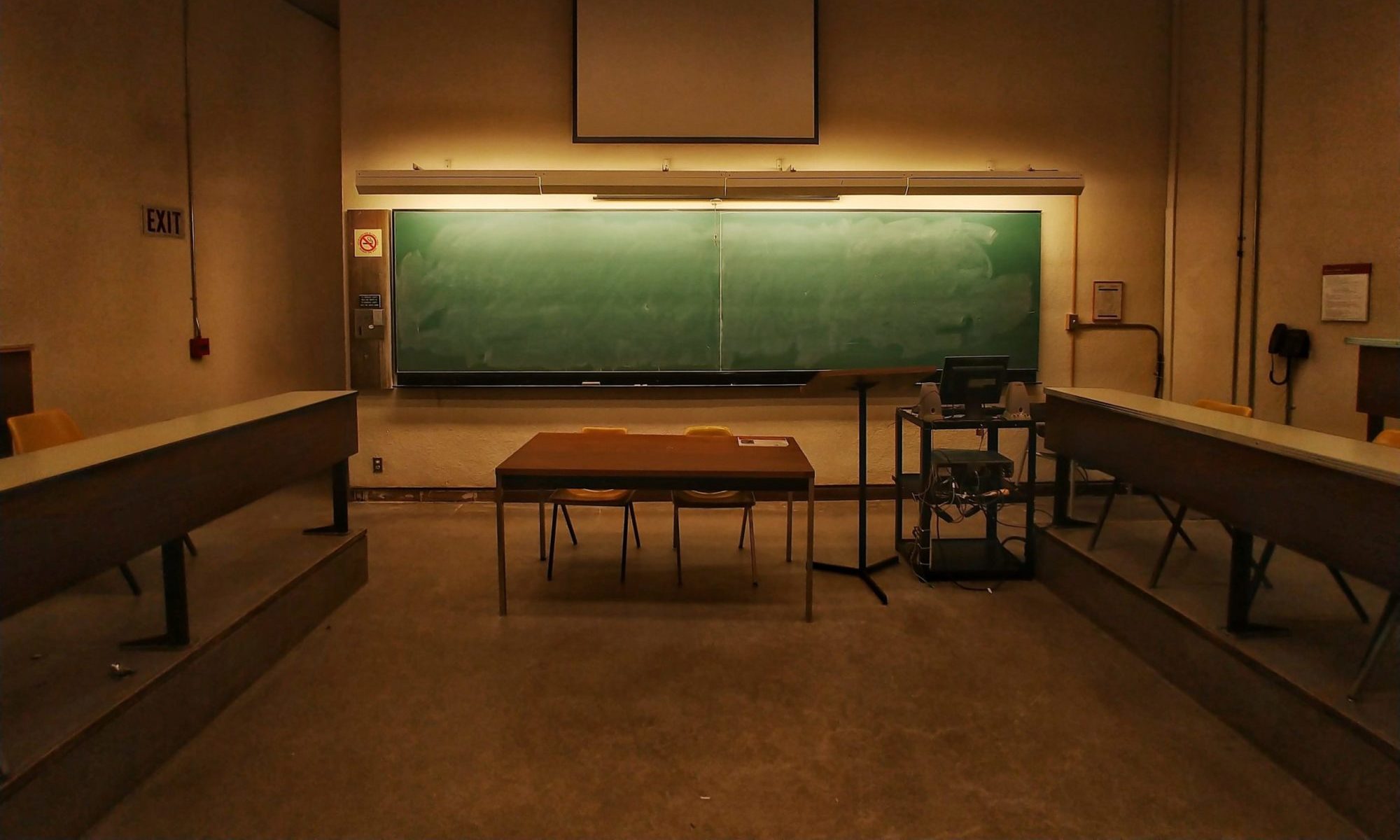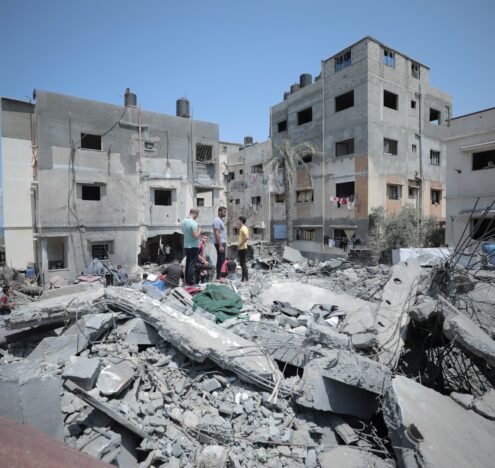Today, I find myself trying to reconcile two extremely different realities. When some look at my 2019, they are convinced that it was “one for the record books” – they see two Air Force and one MAJCOM awards; one of six officers selected by the Service’s top general for a special program; and one who received out-of-cycle orders for a true by-name hire from a General Officer. However, when those closest to me look at my 2019, they see a depleted soul and a body battling stress-induced issues – to the point that my younger brother pulled me into a makeshift intervention, saying: “Look, I’m not getting the phone call that you put a bullet in your head!” How could such opposing realities possibly exist simultaneously?
For the sake of transparency and honest brokerage, I’ll be the first to admit that, professionally, 2019 was a positive year for my career. This success was a culmination of momentum stemming from the deliberate efforts of my parents, mentors, teachers, family, and friends that pushed me in the good times and stood by me through my worst times. But what we must realize as an Air Force (especially as we struggle to retain talent) is the simple fact that there is not always a proportional relationship between performance metrics and an individual’s resiliency. While we may think high-performers have it all together and that we should focus resiliency efforts on specific and stereotypical subgroups like “loners” and the “socially awkward,” this is a dangerous misperception. To the contrary, I often see an inverse relationship between the accomplishments of the USAF’s true performers and their resiliency to keep going in the uniform another day – and that is precisely the place I find myself at the end of 2019.
Why? After a lot of careful introspection, I’ve attributed it to two root causes: “toxic leadership” and “institutionalized mediocrity.” Since “toxic leadership” can be subjective and, frankly, has become something of an overused cliché, I’ll focus my analysis on “institutionalized mediocrity.” As a career academic and instructor, you’ll forgive me for defining the term:
Institutionalized Mediocrity (noun)
in·sti·tu·tion·al·ized me·di·oc·ri·ty
1. A system of organizational leadership in which the status quo is actively maintained at all costs, where standards are fluid and enforced or unenforced based on desired political end state(s), and where honest and corrective feedback or innovation is discouraged in order to preserve current inertia.
2. An organizational culture that seeks “relevance” rather than “excellence” – such organizations reject customer-driven feedback models and instead assume that their product or service is faultless. Any contrary feedback is dismissed as irrelevant.
Example: An organization that actively preaches the mantra “don’t do anything dumb, dangerous, or different” – however continually performs actions that are “dumb” and/or “dangerous” and does so because to do anything else would be “different.”
At one point, some of us were under an O-6 directed social media “gag order” while a certain community attempted to reallocate budgetary line items to personnel bonuses and wanted to do so without drawing attention from Congressional Representatives.
My current work environment is one defined by institutionalized mediocrity. To make matters worse, this mediocrity is embodied and buttressed by the officer corps to the point that a very astute Senior Airman (E-4) told me recently: “You know, I look around and I see who they give O-4 and O-5 to and I realized that I’m going to be just fine if I ever commission.” At the risk of sounding cynical (and at the risk of undercutting my own term), my specific circumstances may be better understood not as “institutionalized mediocrity,” but rather as a byproduct of the Cult of Mediocrity. Mediocrity is venerated and quasi-worshipped in my current organization; logic is suspended and the one-off “successes” (using that term loosely) of the past are used to incoherently justify the tactics, techniques, and procedures of the present. This mediocrity is so entrenched that I have observed doctrinal terms deliberately used incorrectly and the O-6 levels of leadership literally delete truthful statements from or insert falsified statements into performance reports, decorations, etc. to “strategically message” the rest of the Air Force as to what we “do” and “don’t do.” Those struggling or failing to meet standards (e.g. airmanship, safety, and discipline) or regulations (e.g. safeguarding of classified information) often have their transgressions swept under the rug to deceptively prop up readiness metrics reported to higher headquarters – it’s more politically advantageous for some commanders to turn a blind eye than address the issue. Falsified or highly embellished awards packages are rampant. At one point, some of us were under an O-6 directed social media “gag order” while a certain community attempted to reallocate budgetary line items to personnel bonuses and wanted to do so without drawing attention from Congressional Representatives.
Speaking to the aforementioned Airman’s point, promotion recommendations and stratifications are often awarded to those who best peddle the wares of mediocrity, and those who aren’t “chosen ones” carry a disproportionate amount of the workload while reaping very little in return. It is precisely this “non-chosen” status I’ve found myself in while assigned here (don’t conflate a by-name hire from outside the organization with acceptance from within) and it has caused me to struggle with questioning my own sanity, a professional helplessness or depression, and many of the physical ailments connected with these non-tangible struggles: teeth grinding, trouble sleeping, weight gain, back/neck pain, etc. Put another way, this organization’s culture and climate has created a never-ending struggle between my altruistic work ethic and the pragmatics of reality (what’s the point in selfless right-doing if I’m playing in a rigged system?) – a struggle that has left me physically, emotionally, and mentally exhausted.
As for toxic leadership, I mentioned previously that I don’t want to perpetuate clichés to the point my intent with this article is lost. While I will take credit for standardizing and defining “institutionalized mediocrity,” the likes of J.Q. Public and Ned Stark have beat me to the proverbial punch on toxic leadership and addressed it in ways far more eloquent than I ever could. In the paragraph above, I’ve tied some of the results of toxic leadership to institutionalized mediocrity – but other anecdotal references from my experiences include servicepeople taking credit for others’ work in an attempt to get promoted (then later publicly and systematically slandering the person that actually did the work) and “deploying” (another term used loosely) unnecessary personnel to extremely gucci locations (at the taxpayer’s expense) while leaving those doing the work to suffer through as “one deep,” or without anyone to help shoulder the load. In any case the resulting consequences for the high performers are the same as institutionalized mediocrity – it leaves them feeling confused, exhausted, depleted, and often times looking for a way out.
It is this notion of “looking for a way out” with which I want to conclude — since it’s precisely why I began by pointing to the seemingly impossible juxtaposition of high performance and low resiliency. That said, I must be very careful how I go about closing this train of thought. “Looking for a way out” is often a euphemism for suicide, but that is only part of what I’m ultimately speaking to in this article. Nevertheless, I want to parenthetically pause this article and say categorically that taking your own life is never the answer – if you need to talk to someone, talk to someone. I’ve had a family member, a childhood acquaintance, and a former subordinate each commit suicide… it doesn’t solve anything and only leaves in its wake more pain. Do not sit in silence because there is no shame in asking for help. That said, and at the risk of sounding callous, what we as military leaders have to come to terms with is the fact that finding “a way out” of a bad situation (in this case, life in the Air Force) doesn’t only manifest itself in suicidal ideations. It can also take the form of the high-speed Senior Airman who chooses not to re-enlist despite his line number for Staff Sergeant, or the High Potential Officer (HPO) who resigns her commission as a Captain to look for better prospects. From a readiness standpoint, any “way out” of the Air Force means one less warrior to answer the Nation’s call in times of trouble. Again, please don’t misunderstand – I am not equivocating the military’s suicide problem with the USAF’s talent retention crisis; that would be wrong. However, I would humbly ask that you consider the possibility that it would be equally incorrect to say that there are not overlapping solutions that could help alleviate both issues.
Ending this where I began, I am optimistically looking forward to what 2020 has to offer, but I am also discouraged as a result of being absolutely exhausted and demeaned. Consequently, this holiday season I (for the first time in my professional life) deliberately attempted to take a knee and spend time with my family to try and get to a better mental, emotional, spiritual state of being. To my fellow high-performers wondering if being in the Air Force is “worth it,” I say this: It’s 100% okay to be tired, but if you leave, who will hold the line against the institutionalized mediocrity and toxic leadership? To the USAF’s Senior Leadership, I say this: please understand that you can’t legislate morality – the two-line Promotion Recommendation File (PRF), changes to the OPR, or any other procedural change will not fix the self-centered “leaders” (the final term I’ll use loosely) who place politics over duty. When your “inputs” are corrupt the “outputs” will be also, regardless of how sophisticated a mechanism you devise. To the rest of my brothers and sisters in arms, please accept these undeniable truths: You matter and there’s no shame in asking for help.
Captain Murphy Parke (a pseudonym) is an 8-year member of the United States Air Force with worldwide operational and combat experience in Iraq and Afghanistan. He is a Weapons School graduate; an instructor/evaluator in multiple weapons systems; and avid traveler. His leadership and professionalism in the Special Operations, Joint, and Multilateral environments have secured him accolades at the highest levels of the Department of Defense and his experience in high-performing teams has grounded him in the notion that “better” is the enemy of “good enough.”





















